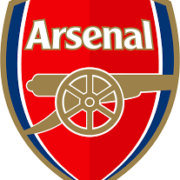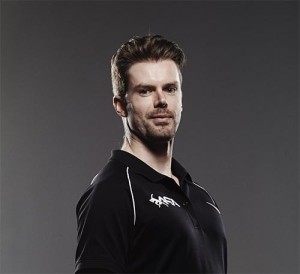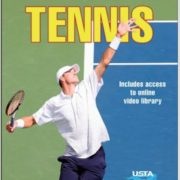Yesterday I went to Middlesex University for the 9th Annual Strength and Conditioning Student Conference. I think I’ve only missed one since they started!

As always it was nice to catch up with a few colleagues and I was particularly delighted to hear Perry Stewart speak, who had previously worked for me some years ago before his role with QPR and more recently his role as Lead Academy S&C coach (U9-16) at Arsenal FC.

Perry Stewart- Title: Understanding the Youth Athlete- From Theory to Practice
Perry split his talk up into three parts which I have discussed below but he started off with an important point.
Youth S&C Coach as a Career
I wholeheartedly agreed with Perry who made a passionate point that too often working with youths is seen as a right of passage for less experienced coaches to gain their experience on route to working with the pros. As Perry said, it is a specific population that needs a specific expertise, along with a lot of experience.
It’s so rewarding because you’re starting with a blank slate- you are building the foundations rather than trying to re-build them.
So now on to the three elements of his talk:
Football as a Business
Perry asked that no one took photos of his presentation but I can say that Perry revealed some fascinating insights into the business that is professional football. He highlighted the huge sums of money it costs to put together a team. Now it wasn’t such a surprise to me that the top teams in Europe have assembled a squad at a cost in the region of £500 million pounds (Man City, Real Madrid, Chelsea, Man United, Barcelona). But what was more surprising was how much it costs to support an Academy player for a season.
U9-U11 £3000 per year
U12-U15 £40,000 per year
U16-U17 £300,000 per year
U18 £500,000 per year
Pro £££££££££££ (based on contract)
Perry said that the chances of an Academy player making a debut in the Premier League are less than 0.05% (I think!!) meaning it is more likely they will be struck by an meteorite!!! And I think the chances of them getting a professional contract were still less than 1%. Given the huge costs to run an Academy and the percentage of players making it professionally a number of Academies have closed.
Growth & Maturation
Perry went into a lot of detail on the way Arsenal use the Peak Height Velocity (PHV) to report back to the coaches on their development. He mentioned the Robert Mirwald (2002) maturity offset (age at/ of PHV) calculation as well as the Khamis-Roche method (% Predicted Adult Height). During PHV you can sometimes see the adolescence ‘awkwardness’ where athletes are like baby giraffes or bambi on ice!! During this time you may need to modify the training somewhat.
Such as:
- reduce reduction of the same tasks- use lots of variety
- periodisation- modulate volume and intensity
- gradually increase workload- avoid acute spikes in training load
Arsenal categorisations for Khamis Roche method:
- Pre PHV <85%
- Approaching PHV 85-89%
- Circa 90-95%
- Post >96%
Typically Arsenal takes measurements quarterly although will increase them to every 6-8 weeks if they are circa PHV. For further info please see this presentation by Dr. Sean Cummings Practical-case-study-of-using-maturation-assessments-and-sport-Sean-Cumming-UK
Arsenal Training System

Apologies as I can’t remember the specific titles for each phase but it went something like this:
Motor competency >> Overload phase >> Specificity >> Periodisation and Planning
You develop the skills (how well you do it) then you add some load to the skills (how well and how much you do). After that you apply the skills to the sport (how fast you do it) and finally you build the skills into a more targeted annual plan. He concluded with two videos showcasing some of the drills and how they are progressed from U9-U16 for speed and then strength.
Dr. Ben Rosenblatt- Title: Physically preparing teams to win major international tournaments
I have known of Ben’s work and reputation for several years having followed him in his roles as a senior rehabilitation scientist for the BOA and EIS, and Senior S&C Coach for the Olympic winning GB Women’s Hockey team. Ben now is the Lead Men’s Physical Performance Coach for the FA.
Ben split his presentation into three areas too:
- Training Durability
- Tournament Durability
- Game Impact
He started by asking the question we should all ask as S&C coaches- but in a slightly different way. Normally the question is ”what are the physical demands of the sport?” If you know this you can prepare for it. But he asked instead,
who are the most PHYSICALLY CAPABLE OF TOLERATING the demands of training?
Who are the players in the team who seem to be always turning up to every training session ready to get after it, that don’t pick up many knocks or illnesses?
Training Durability:
I was interested to see that Ben has been using a jump profile to measure physical characteristics that might be related to training durability. But unlike concentric measures of power or force he was focusing on eccentric measures. This makes sense as it is the deceleration components that place the most stress on the body!

He was looking at both the speed of the eccentric lowering phase of the jump but also the depth. It appears that those athletes that can drop deeper but faster and can then obviously arrest that momentum in the time needed to deliver the jump are most robust. They are typically the strongest (1.7 x BW Back squat) and have a mean power on the eccentric phase of 8 W/kg performing the jump in under 0.5 seconds and a depth of 40cm.
Is it a surprise that stronger athletes are most durable? No! But it is good to see a test that is sensitive enough to discriminate between the athletes who get fatigued by a tough session and those that actually respond positively to it.
Doing more work than normal
Ben was able to show that stronger players have a potentiation effect (jump performance) the day following a match/session where you have to do more work than normal.
Fit players sleep better
Players who score more than 20.5 on a 30-15 test ease to sleep better. Equally unfit players who also have to do a high training load are going to experience significantly larger amount of fatigue.
Tournament Durability
Essentially this part of the talk can be summarised as ‘Training tougher than a Match.’ Ben highlighted that in a week where he wanted the team to get after it (in a previous training camp) he used GPS to record workrate and specific percentage of time in high speed running zones (>5 m/s). He found that only 8% was above match intensity in the training.
He spoke to the coaches about needing to get them to be training at higher loads than in a match during this period and they constructed a few drills to specifically address this such as a 4 vs 4 game in a 60 x 40 Yd. pitch where the ball could only be played forward. This encouraged a lot of movement ahead of the ball to keep possession.
Game Impact
Ben asked two questions:
- What matters most?
- What’s easiest to change?
He said he spoke to the Head coach and his summary of the hockey strategy was they need to jump back harder and get ahead of the ball harder!! Basically they needed to be faster at retreating when they lost possession of the ball (GET BACK) and faster at advancing ahead of it when they gained possession (GET THERE), and do it for the entire match (LAST THE GAME).
Planned vs. Programme Change of Direction
GB Hockey prided themselves on being the fittest team in world hockey but one of the things Ben found was that players were very slow to redirect their changes of direction when they needed to respond to an opponent/change of possession etc. He said they were all very good at doing high speed shuttle drills but this was a closed drill with an anticipatory change of direction.
Biomechanics tells us that the deceleration loads of unplanned directional changes are much higher than planned directional changes. You spend more energy taking longer to change direction! So he spent some time on doing more unplanned high speed changes of direction to make more of an impact on game day!
Remember:
- If you’re not subscribed yet, click here to get free email updates, so we can stay in touch.
- Share this post using the buttons on the top and bottom of the post. As one of this blog’s first readers, I’m not just hoping you’ll tell your friends about it. I’m counting on it.
- Leave a comment, telling me where you’re struggling and how I can help
Since you’re here…
…we have a small favor to ask. APA aim to bring you compelling content from the world of sports science and coaching. We are devoted to making athletes fitter, faster and stronger so they can excel in sport. Please take a moment to share the articles on social media, engage the authors with questions and comments below, and link to articles when appropriate if you have a blog or participate on forums of related topics. — APA TEAM
=> Follow us on Facebook
=> Follow us on Instagram
=> Follow us on Twitter













